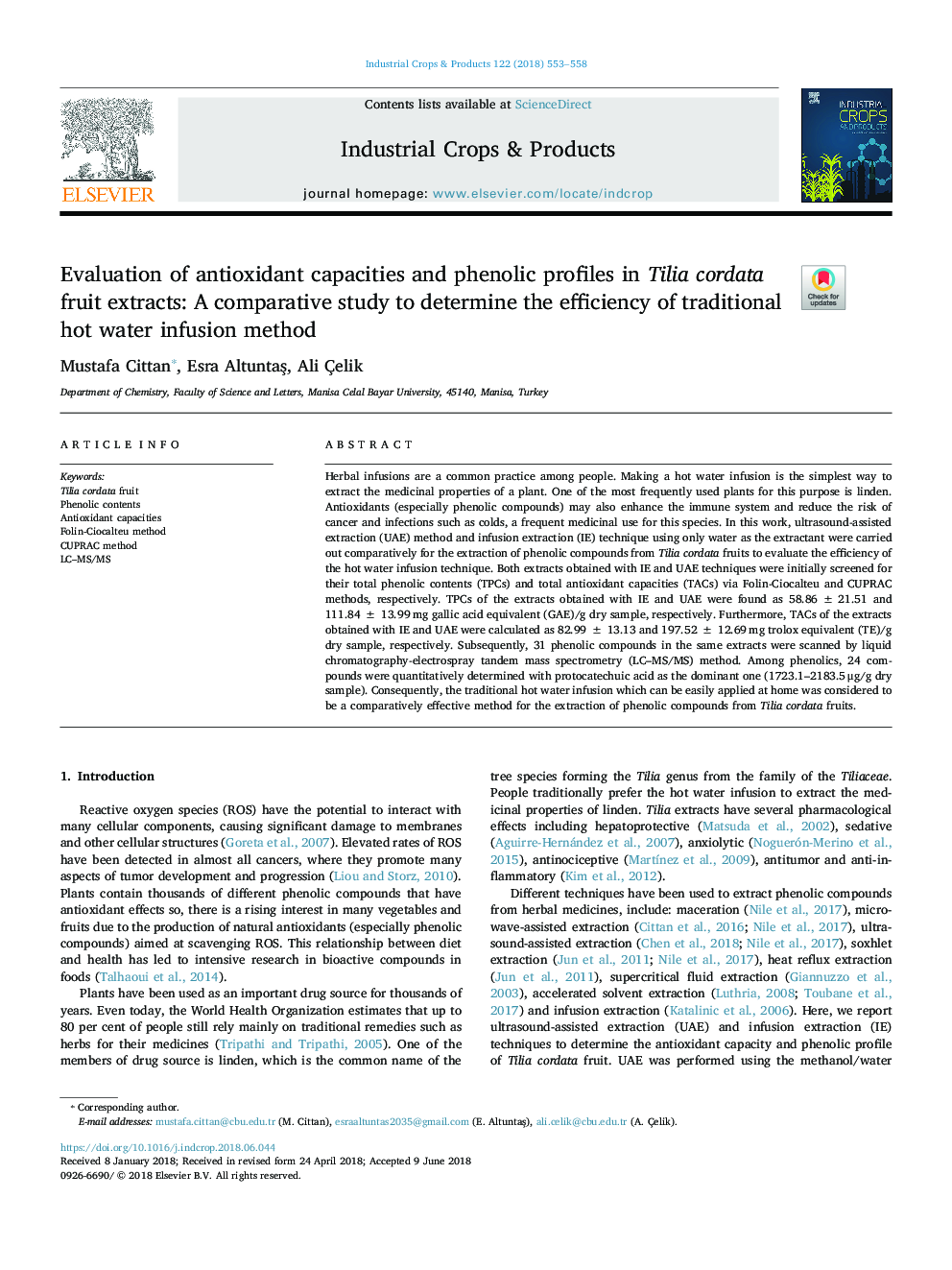| Article ID | Journal | Published Year | Pages | File Type |
|---|---|---|---|---|
| 8879674 | Industrial Crops and Products | 2018 | 6 Pages |
Abstract
Herbal infusions are a common practice among people. Making a hot water infusion is the simplest way to extract the medicinal properties of a plant. One of the most frequently used plants for this purpose is linden. Antioxidants (especially phenolic compounds) may also enhance the immune system and reduce the risk of cancer and infections such as colds, a frequent medicinal use for this species. In this work, ultrasound-assisted extraction (UAE) method and infusion extraction (IE) technique using only water as the extractant were carried out comparatively for the extraction of phenolic compounds from Tilia cordata fruits to evaluate the efficiency of the hot water infusion technique. Both extracts obtained with IE and UAE techniques were initially screened for their total phenolic contents (TPCs) and total antioxidant capacities (TACs) via Folin-Ciocalteu and CUPRAC methods, respectively. TPCs of the extracts obtained with IE and UAE were found as 58.86â¯Â±â¯21.51 and 111.84â¯Â±â¯13.99â¯mg gallic acid equivalent (GAE)/g dry sample, respectively. Furthermore, TACs of the extracts obtained with IE and UAE were calculated as 82.99â¯Â±â¯13.13 and 197.52â¯Â±â¯12.69â¯mg trolox equivalent (TE)/g dry sample, respectively. Subsequently, 31 phenolic compounds in the same extracts were scanned by liquid chromatography-electrospray tandem mass spectrometry (LC-MS/MS) method. Among phenolics, 24 compounds were quantitatively determined with protocatechuic acid as the dominant one (1723.1-2183.5â¯Î¼g/g dry sample). Consequently, the traditional hot water infusion which can be easily applied at home was considered to be a comparatively effective method for the extraction of phenolic compounds from Tilia cordata fruits.
Related Topics
Life Sciences
Agricultural and Biological Sciences
Agronomy and Crop Science
Authors
Mustafa Cittan, Esra AltuntaÅ, Ali Ãelik,
